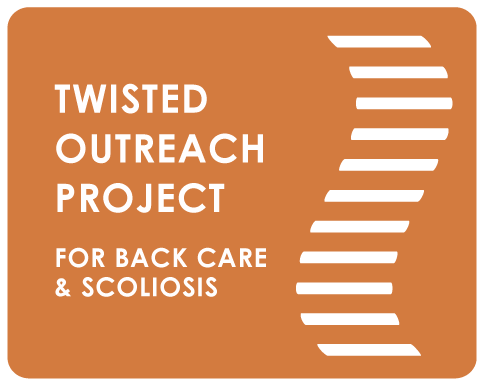Fusion Q&A with Martha Carter - Schroth Method?
In our April Newsletter, we launched a Fusion Q&A series. Every month since, Martha has answered an anonymous question about scoliosis fusions.
****
QUESTION: What is the schroth method and is it effective for people with fusion?
The quick answer is IT DEPENDS!
In fact, it is the same answer for all the scoliosis-focused movement modalities.
The key to maintaining and potentially correcting imbalances and discomfort caused by scoliosis, is that each person must take the time to learn about their unique curve patterns and develop awareness around their own wellness.
The Schroth Method is a therapeutic exercise technique developed in Germany by Katharina Schroth (1894-1985). It focuses on stopping curve progression, reducing pain, increasing strength and lung function. Similar in some ways to Yoga for Scoliosis, and in other ways to Scoli-Pilates, Schroth also uses wall barres to assist in the training.
From my understanding, based on conversations with people who have benefited from Schroth, the main reason that this technique is successful is the fact that they start patients young and require commitment and consistency from every client. There is also the option to start at any age, but changing strong scoliotic patterns is easier when young.
To explain further, one of my TOPS colleagues, Hannah, grew up in Germany where she was sent by her general doctor to the Schroth Institute to attend regular teenage ‘scoliosis boot camps’.
I think she also consulted a surgeon, but the fact that the boot camp was recommended as a viable option made her want to explore it (in contrast, most teenagers in North America are sent straight to the surgeon without other options).
At the boot camp, the teenagers were taught to embrace their scoliosis without fear, shame or judgement. They learned exercises and lifestyle awareness to help themselves, and as part of the program, were expected to maintain a daily practice by themselves at home. Because it was social and fun, there was healthy peer pressure to help everyone stick with their ‘homework’. This led to very successful outcomes for most of the students, including Hannah. Fifteen years later, her spine is still very curvy, but also strong, balanced, and generally pain-free. Like all of us, her spine requires constant maintenance, and occasionally she has bad days, but mostly, she can just reach into her vast toolbox of knowledge and get herself feeling better quickly.
So is its success due to the actual technique or due to the youth and consistency?
Both!
Can it help people at any age?
Yes!
And back to the main question, is it good for people with fusion?
Well, like everything with scoliosis and fusion, it depends on each person and what/who works best for them. No single bodywork modality will ever change the fact that there is a fusion, but learning new awareness and gentle movement can always help gain function and mobility and reduce pain.
To learn more about the Schroth technique or to find a specialist near you, visit: https://www.schrothmethod.com.
To read about a variety of scoliosis-focused techniques and supportive care options, check out the TOPS website here.
Martha has also written several blog posts about how to choose the right exercise modality for you:

